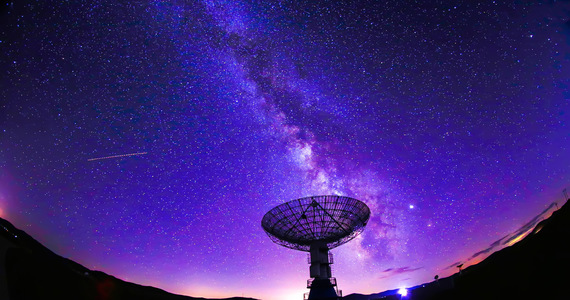BLC1 is not a signal from an extraterrestrial intelligent civilization, but rather a radio interference signal. Detailed research results are described in Nature Astronomy. This means that we have to wait a little longer to get a message from the “Aliens”.
The BLC1 signal was discovered in April 2019, when Andrww Zic of the University of Sydney began observing the star Proxima Centauri. The object 4.22 light-years away is the closest star to us, although it is too faint to be seen with the naked eye. Zic observed a Proxima Centauri glow – similar to that emitted by the Sun (along with coronal mass ejections). This is the characteristic of all stars.
There is a planet – Proxima Centauri b – orbiting Proxima Centauri, which is constantly affected by cosmic weather. While this does not preclude the presence of life there, it is possible that the surface of the planet is very inhospitable. Scientists have long wondered whether Proxima Centauri b might have favorable conditions for the emergence of life. Perhaps one day we will find out, because this system is one of the few systems that we can visit in our lifetime.
A spacecraft traveling at near the speed of light would take about 9 years to make a round trip. It’s still a long way from our technological capabilities, but in the near future, nanostats using space-saving technology may get there. That is why it is important to understand this planetary system.
The BLC1 signal detected was intriguing, although for a long time the scientists remained isolated. Sophia Sheikh of Penn State University was responsible for the analysis of BLC1. There are many indications that BLC1 may be a sign of extraterrestrial technology – the so-called technical signature. Surprisingly, BLC1 was only detectable when we were looking toward Proxima Centauri (not called out-of-source observations) – which is unusual because most astronomical phenomena are visible from all directions. Moreover, the signal occupies only one narrow band of frequencies, while emissions from stars or other astronomical objects usually occur on a wider range.
Sophia Sheikh’s team analysis showed that BLC1 most likely has a terrestrial origin. It’s probably radio interference from our planet. Scientists found similar signals after scanning the full bandwidth of Parkes Observatory.
We do not know exactly what the source of BLC1 is, nor why the signal was not detected in out-of-source observations. Some suggest that BLC1 is what is called intermodulation, a phenomenon in which two frequencies mix together to create a new signal. This can be seen, for example, during the “distortion” while playing the guitar. Perhaps BLC1 is just such a signal. However, this does not mean that we should stop observing the sky, because Proxima Centauri is only one of hundreds of billions of stars in the Milky Way.

“Prone to fits of apathy. Introvert. Award-winning internet evangelist. Extreme beer expert.”










